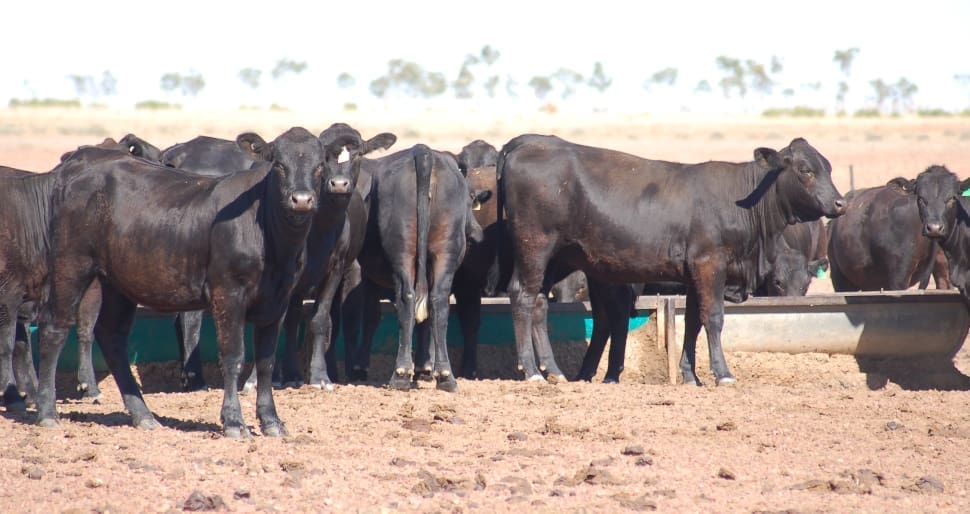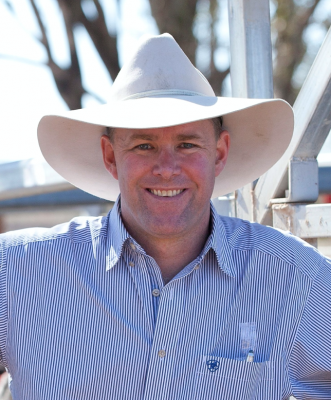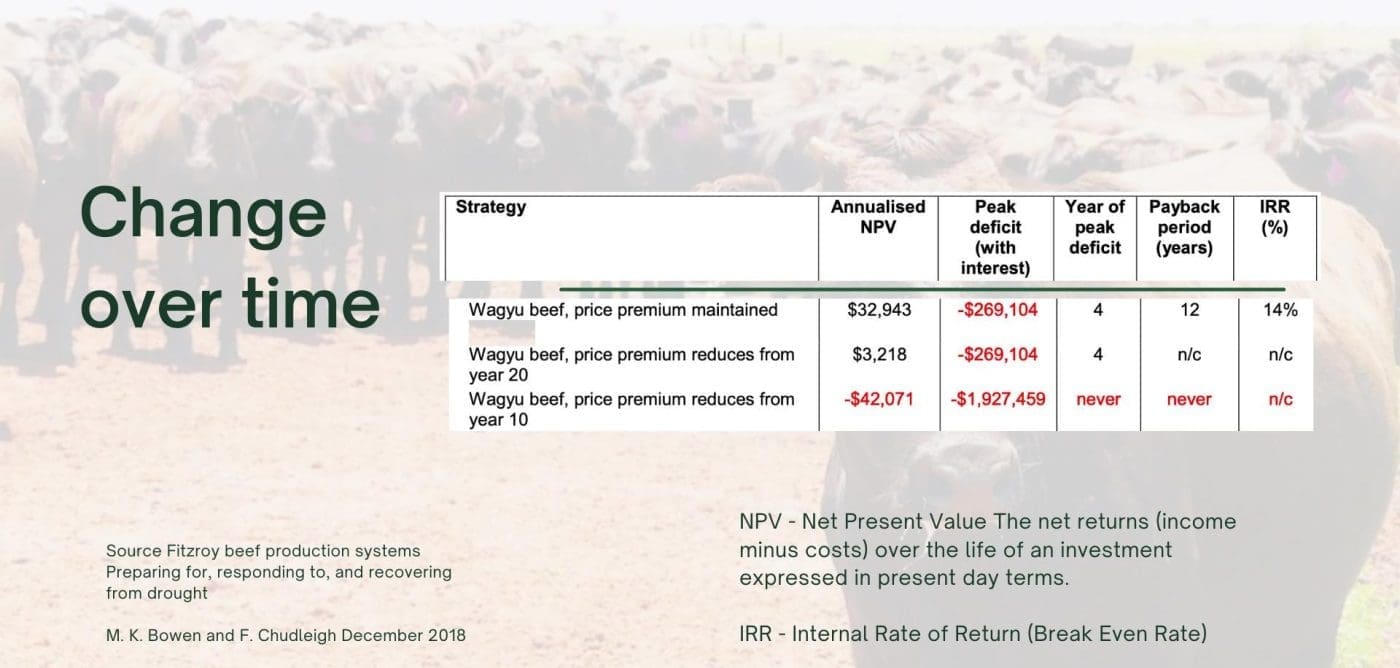
Wagyu F1 calves on AA Co’s Avon Downs station on the Barkly Tableland
TRANSITIONING a commercial beef enterprise with the introduction of a new breed is a subject many producers have considered at one time or another.
The reasons for a transition to a new breed, a new target market or a new enterprise structure are often complicated.
On the surface many discussions around transition – particularly to a new breed – are couched in terms of increased profitability for the enterprise.
For many producers, the appeal of moving to a new breed can be very attractive. On the surface new breeds (either recently-established breeds, or those with a longer history) attract a high degree of interest when producers look at sale prices and average sire values.
An example some producers may have considered might be a move from straightbred Angus into some F1 or higher Wagyu in southern Australia, or adopting some Angus into a Brahman composite in the North. Making these changes is actually a longer process than many producers may appreciate.
Often the evaluations of such a change fail to factor in the length of time it takes to change a herd’s breed base, as well as accounting for the likelihood that a price change may occur within the transition timeframe.
Fitzroy Basin example
The Queensland Drought & Climate Adaptation Program released a series of reports in late 2018 addressing strategies producers may wish to consider as part of their long-term approach to drought adaptability. The authors, Maree Bowen and Fred Chudleigh of the Qld Department of Agriculture carried out an exercise modelling the impact of changing from a Brahman based herd to one with Wagyu genetics for a property in the Fitzroy basin.
Their analysis considered a range of strategies. The option to move to a Wagyu enterprise on the surface suggested a strong return for the enterprise. Based on price premiums at the time the report was written for 100pc Wagyu cattle, the enterprise could potentially achieve a $32,943 per annum increase in profit (editor’s note: More than two years has passed since the report was released, and relative cattle values may have shifted since. Beef Central is currently working on a feeder price update for Wagyu cattle – both F1 and Fullblood).
However, this was only achievable if the premiums available at that time remained unchanged from the seventh year of the transition from Brahman to Wagyu, through to the thirtieth year from the start of the enterprise change over.
If the price premium reduced from the twentieth year of analysis, it was found that the investment in Wagyu cattle was only marginally profitable – with an increase of $3218. And if price premiums were changed from the tenth year, the decision actually reduced the profit and the decision to change resulted in a loss of $42,071 against the property’s original annual profit.
While this study focused on the option of transitioning across from Bos Indicus to Wagyu, there are relevant messages for producers in any location considering a change from one breed to another.
The principal message is to ensure that sufficient time is given to any analysis. To breed into a new direction does take time, with at least seven years to move to a position where the new breed becomes the major base of the herd.
It is also essential to appreciate that price premiums may not remain consistent. A move to capture a price premium must be taken into context of likely fluctuations that will be driven by both national and global events.
The decision to embrace a new breed will also come with new challenges that are often overlooked or underappreciated. The choice of sires within breeds, and the suitability of those cattle to specific markets will all play a contributing role in determining the ability of a product to capture the price premiums over a period longer than 20 years.
This is certainly not to suggest producers should not choose to transition to a new breed. There are many successful producers who have embraced new breeds in southern Australia as well as northern producers who have established highly productive and profitable Wagyu based programs. These producers however share a similar mindset of being prepared to make long term plans and have realistic assumptions based on returns and break-even prices.
Ultimately a decision to go down the track with a new breed needs to have some long-term analysis conducted to ensure the increase in price received reflects the decision to change.
It also requires a series consideration of the associated requirements to make the new direction as effective and suited to the market as possible if those premiums are to be achieved.
 Alastair Rayner is the Principal of RaynerAg, an agricultural advisory service based in NSW. RaynerAg is affiliated with BJA Stock & Station Agents. He regularly lists and sell cattle for clients as well attending bull sales to support client purchases. Alastair provides pre-sale selections and classifications for seedstock producers in NSW, Qld, and Victoria. He can be contacted here or through his website www.raynerag.com.au
Alastair Rayner is the Principal of RaynerAg, an agricultural advisory service based in NSW. RaynerAg is affiliated with BJA Stock & Station Agents. He regularly lists and sell cattle for clients as well attending bull sales to support client purchases. Alastair provides pre-sale selections and classifications for seedstock producers in NSW, Qld, and Victoria. He can be contacted here or through his website www.raynerag.com.au

